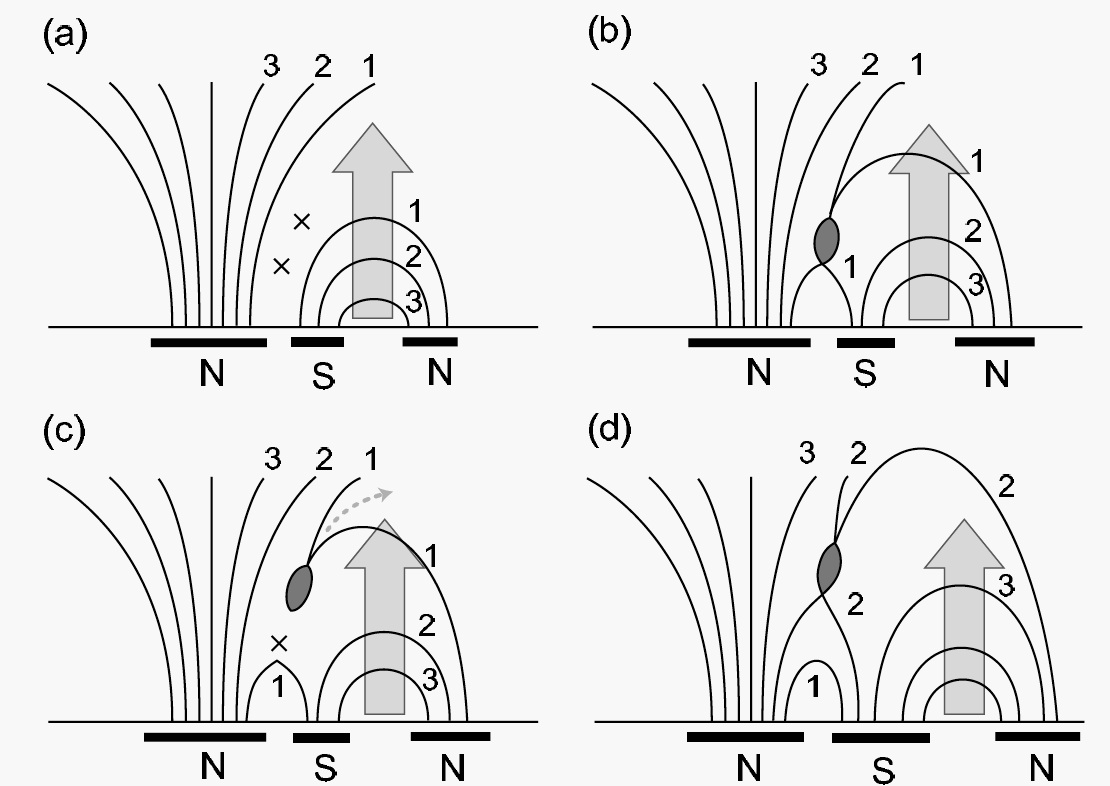
Takasaki, Hiroyuki, Ayumi Asai, Junko Kiyohara, Masumi Shimojo, Toshio Terasawa, Yasuhiro Takei, and Kazunari Shibata, A Quantitative Study of the Homologous Flares on 2000 November 24, ApJ, 613, 592-599 (2004) (ADS)

(click on the image for a larger version)
Date: 2006 September 24
Update: 2019 December 02
How in the world can strictly homologous flares ever happen? We see examples of astonishing mimicry from sequences of flares, including time series as well as details of image morphology. Clearly, if magnetic reconnection plays a role in flare energy release, this would not be possible - energy is dissipated, so the process is irreversible thermodynamically. The same would hold for models not requiring reconnection; the geometry should be altered and the nature of energy storage with it. So... how do we patch up CSHKP, for example? The solution is to postulate some coherence in the emergence of new magnetic flux from the solar interior. This might allow similar events to occur sequentially. The driver could be the same, and if the environment into which the flux emerges is also postulated to be irrelevant, then Bob's your uncle.
I think this description of coherence in flux emergence must be what the authors are aiming at, although they don't discuss such ideas. This is a nice paper but it is typical of the genre: slant all the arguments to prove consistency with "the" magnetic reconnection model. It would have been nicer if they had derived values for "the" coronal magnetic field instead of just inferring them in order to establish the desired consistency.